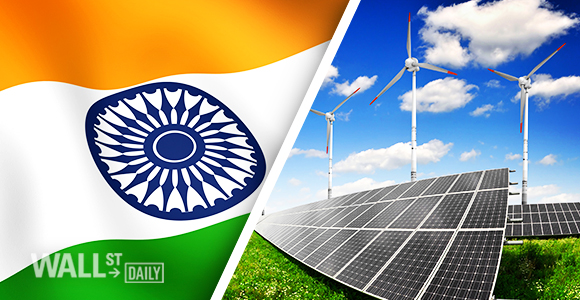
India grabbed the headlines recently when it announced its GDP growth in the fourth quarter of 2015 at 7.3%. For the fiscal year ending March 2016, India should report growth of 7.6%.
Nonetheless, India is still an emerging economy, suffering plenty of growing pains. Among them is the lack of power throughout the country. Roughly 400 million Indians lack access to basic electricity. Many of the rest suffer through all-too-common power outages.
However, Prime Minister Narendra Modi has pledged to provide 24-hour electricity to all of India’s 1.3 billion citizens by the end of his term in 2019. An ambitious target, to say the least.
India Goes Green
The Indian government is targeting an investment of $250 billion into power generation and transmission by the end of the decade. Of that amount, $100 billion would be invested into renewable energies – led by solar power.
Tim Buckley of the Institute for Energy Economics and Financial Analysis has said, “India is executing one of the most radical energy sector transformations ever undertaken.”
Luckily, as Buckley said, “The flow of finance is matching the ambition.” Over $100 billion in financing has been announced over the past 12 months.
India certainly needs it.
India’s electric grid presently has a capacity of less than 300 gigawatts. It can reliably handle roughly 272 gigawatts, less than 30 gigawatts of which is from renewable energy sources.
Going Big in Solar
Modi has targeted 100 gigawatts of solar power installations by 2022 – a goal which seems unreachable – especially if one considers that the goal is more than twice the current capacity of the two leaders in solar power, China and Germany.
But India is forging ahead. Solar projects with nine gigawatts of capacity are already underway. Many of these projects will be online later this year.
The push toward solar energy will make India the fourth-largest market for solar panels over the next two years, according to many estimates.













Leave A Comment